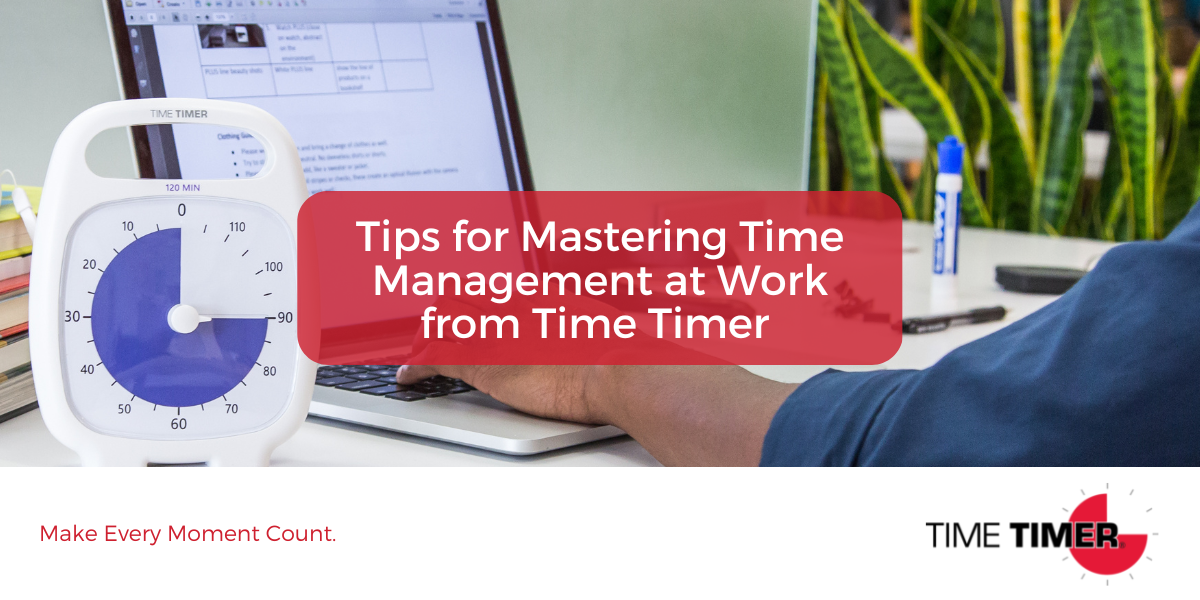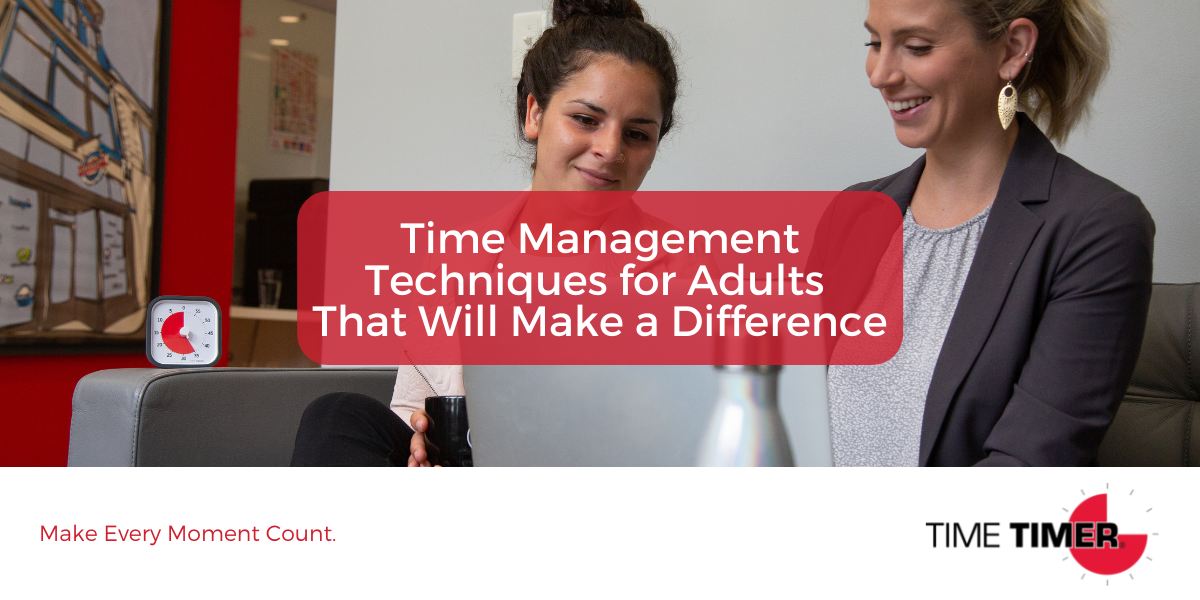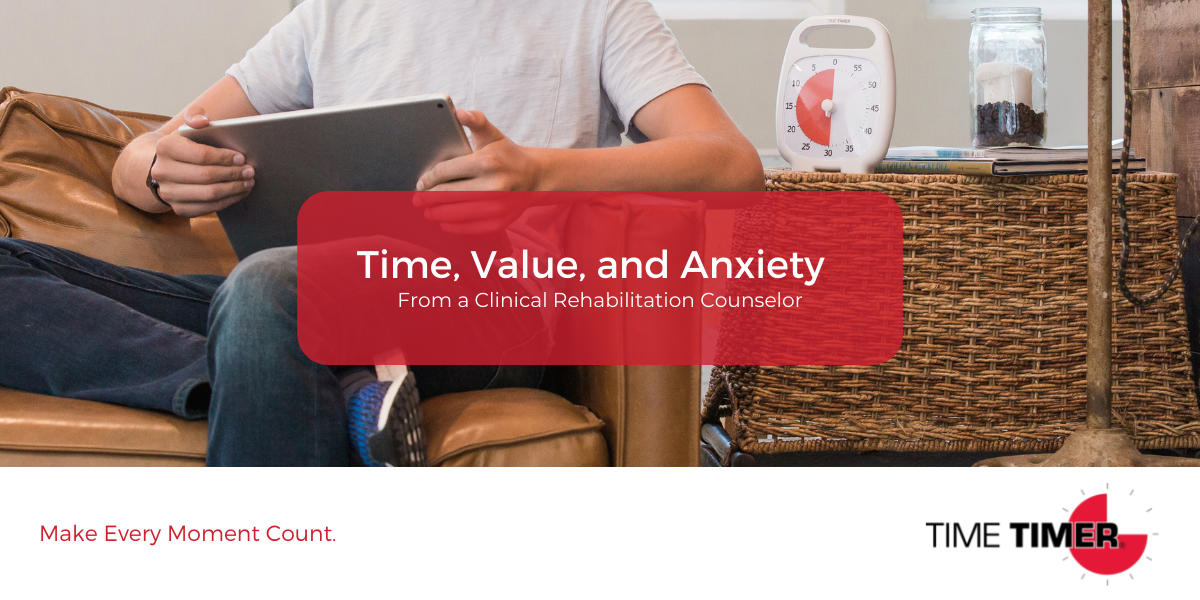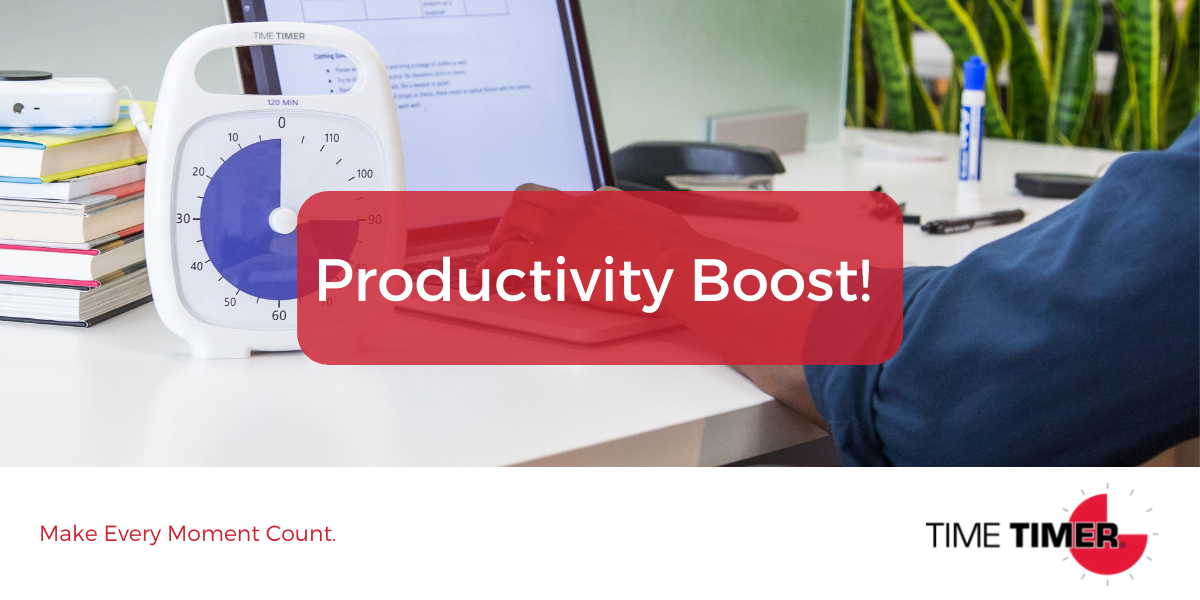Blog — time management tips

Using Time Management Strategies to Avoid Burnout this Holiday Season
The holiday season is a time of joy, celebration, and connection with loved ones.
However, amidst the festivities, it's easy to become overwhelmed and fall victim to burnout. This year, we can help you take control of your time. You can make the most of the holidays with the help of the powerful time-management tools available from Time Timer.
Our innovative visual countdown timers can help you prioritize self-care, manage tasks, and avoid burnout during the holiday season.
Recognizing the Importance of Time Management
The holiday season often brings a flurry of activities, from shopping for gifts to attending gatherings and preparing meals.
Without effective time management, it's easy to become stressed and exhausted. Our products’ visual representation of time helps you make the most of your time, allowing you to focus on what truly matters.
Time management is not about squeezing every second out of the day, but rather about using each moment with intention.
The Time Timer product line helps you see time passing in a tangible way. The timers provide a gentle nudge to stay on track. Using our visual timers breaks your day into manageable chunks. You can allocate dedicated time for various tasks and activities.
Prioritizing Self-Care
Self-care is essential for maintaining physical and mental well-being, especially during the hectic holiday season.
With the Time Timer, you can dedicate blocks of time for activities. This can include exercise, meditation, or simply unwinding with a good book. The countdown makes it more likely that you'll follow through on your self-care commitments.
Imagine setting aside thirty minutes for a brisk walk in the crisp winter air, followed by a relaxing bath.
With a Time Timer visual timer by your side, you can fully immerse yourself in these activities without constantly checking the clock. This focused approach to self-care ensures that you reap the full benefits of these relaxing moments.
Streamlining Holiday Shopping
Holiday shopping can quickly become a time-consuming and overwhelming task. A Time Timer visual timer can be a game-changer in this regard. Set aside specific time slots for shopping, set a timer, and focus solely on finding the perfect gifts. This prevents aimless browsing and ensures that you make the most of your time online.
For example, if you allocate an hour for shopping, set a Time Timer for that duration. As the timer counts down, you'll feel a sense of purpose and focus, allowing you to efficiently websites. This not only saves time but also reduces the stress associated with last-minute shopping.
Efficient Meal Preparation
Cooking for holiday gatherings can be a labor-intensive process.
A kitchen-friendly Time Timer MOD - Home Edition helps you break down meal preparation into manageable chunks.
Set specific time frames for prepping ingredients, cooking, and setting the table. The visual countdown keeps you on track, ensuring that everything is ready to serve at the designated time.
Let’s suppose you set aside two hours for meal preparation. With a Time Timer, you can allocate the first thirty minutes for prepping.
Then, followed it up with a timed hour for cooking. The final thirty minutes can be for setting the table and adding finishing touches. This structured approach ensures that each aspect of meal preparation receives the attention it deserves.
Balancing Work and Personal Life
For many, the holiday season coincides with work deadlines and responsibilities.
A Time Timer visual timer can be a lifesaver in maintaining a healthy work-life balance.
Allocate specific time slots for work tasks, and then transition seamlessly into holiday activities. This separation helps you focus on work when needed and fully engage in festivities without feeling overwhelmed.
Imagine designating mornings for work-related tasks and afternoons for holiday preparations. With one of our visual timers, you can immerse yourself in each task without the constant worry of running out of time. This balanced approach allows you to fulfill work commitments while also cherishing the holiday moments with your loved ones.
Creating Meaningful Family Time
Quality time with family is the heart of the holiday season. A Time Timer visual timer can be used to ensure that family activities are both enjoyable and meaningful.
Use a visual timer for activities like decorating the tree and playing games. This focused approach helps create cherished memories without feeling rushed.
Imagine dedicating an evening for family game night. We recommend going with a Time Timer Original 8” or 12”, which are big enough to be visible to all players.
You can set aside an hour for this activity. As the timer counts down, you'll be fully present, enjoying the laughter and camaraderie. This intentional approach to family time ensures that everyone feels valued and cherished.
Celebrating the Holidays with Time Timer
Don't let burnout steal the joy and magic of your holiday festivities. A Time Timer visual timer is your ally in taking control of your time, prioritizing self-care, and fully savoring every moment. Implementing the above time management strategies can mitigate burnout.
Embrace the power of effective time management and make this holiday season truly special. With a Time Timer by your side, you'll experience the true essence of the holidays: joy, connection, and gratitude.

Tips for Mastering Time Management at Work from Time Timer
On today’s blog post we are going to do is break down some time management tips that can make the workday much less stressful. Naturally, these solutions will include one of the best time-management tools of all: The Time Timer!
Time Management Tips for Physicians
Because of their busy schedules and extensive work hours, time management is essential for doctors. Read on to find out some good time management tips for physicians, and how the Time Timer can assist in that.
Best Time-Management Techniques for Reducing Stress
Do you always feel like you are trying to beat the clock? We want to offer you some time management tips so that you will be a friend to time, or just keep it off the forefront of your mind so that you can concentrate on what really matters in the moment.
Five Smart Ways Nurses Can Conquer Time Management
What are some time management strategies and ideas for Nurses? No matter how hectic, unstructured, and unpredictable a nurse’s day may seem to be, there are some practical and concrete ways to build a sense of order through smart time management ideas. Being as proactive as possible is the key. While it won’t make your difficult job easier, these tips can provide a foundation of order that makes it feel more possible to get it all accomplished.
Time Management Techniques for Adults That Will Make a Difference
If you’re someone who seemingly has tried everything to manage your time more effectively without consistent results, you’re certainly not alone. The team at Time Timer is providing inspiration for adults determined to hone their time management skills once and for all.
Four Tips to Help High School Students with Time Management
High school is an exciting time for teenagers, but it doesn’t come without potential stressors and a few learning curves. Here are four tips to help high schoolers find focus and calm with time management.

Looking to boost your work productivity and efficiency? Time management strategies are key!
It’s that time again – a brand new year! When it comes to a fresh approach and renewed focus on what’s important, time management is on the goals list for many people. As you embark on your personal and professional journey in 2022, consider where you see room for improvement in your time management patterns and strategies at work.
Time, Value, and Anxiety
This blog post is written by a Clinical Rehabilitation Counselor. He shares how time management can be a trigger for many with anxiety and shares how the Time Timer can help in many aspects for those with anxiety because it is a visual measurement that all ages and abilities can understand.
Color-Coded Time Management for the Win: Classroom Edition
Color-coding your classroom can be an excellent way of keeping the kids organized and focused on a variety of daily classroom tasks. In fact, many scientific studies support this theory. Using color schemes in your classroom not only makes the learning environment more fun, uplifting, or happy – it truly can make a difference in learning outcomes in the classroom.
Productivity Boost!
Learn ways to boost productivity with this blog of ideas. Whether you are at home, in the classroom, or at work, Time Timer is a great tool to help boost productivity. Learn about Time Blasts and how to utilize them to make every moment count.
